Qual è il modo migliore per sapere che stai acquistando? sedie in legno resistenti che durerà per anni e resisterà all'usura quotidiana? Chiedi informazioni sul processo di finitura.
Una delle migliori caratteristiche delle strutture delle sedie in legno è che possono essere facilmente personalizzate con un'ampia varietà di opzioni di colore. Questo perché il legno accetta molto bene il processo di colorazione.
Sfortunatamente, questo significa anche che il legno probabilmente assorbirà altre cose meno desiderabili come versamenti e germi. I telai delle sedie in legno hanno anche più probabilità di mostrare ammaccature, tagli e graffi rispetto ad altri tipi di telai come alluminio e acciaio.
Questi fatti dimostrano perché la qualità del processo di finitura è così importante.
Prima di acquistare sedie in legno, informatevi su questo processo e scoprite che tipo di lacca usa il produttore. Dovrebbe essere robusta, come una lacca catalizzata, per mantenere il colore ed evitare scheggiature e ammaccature. Una lacca forte impedirà anche l'assorbimento di germi e versamenti, nonché problemi dovuti a climi umidi o secchi.
Holsag sta dietro le nostre sedie in legno con un 10 anni di garanzia sul telaioIl nostro esclusivo processo di finitura in nove fasi dovrebbe aiutarti a sentirti sicuro del tuo acquisto.
Ve lo spieghiamo in dettaglio qui.
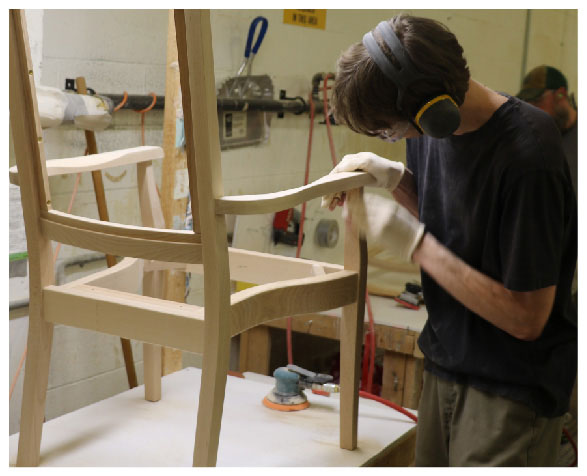
Primo passo: Carteggiatura
Il telaio è costruito utilizzando legno duro di faggio europeo 100%. Viene poi levigato con carta vetrata a grana 100.
Il numero di grana di una carta abrasiva indica la dimensione delle particelle abrasive. Sono disponibili carte con numeri da 24 a 2.000 o più. Un numero più alto indica particelle più piccole, che lasciano un aspetto più fine e lucido. La carta con un numero di grana di 100 è una buona scelta per la preparazione finale prima della finitura.
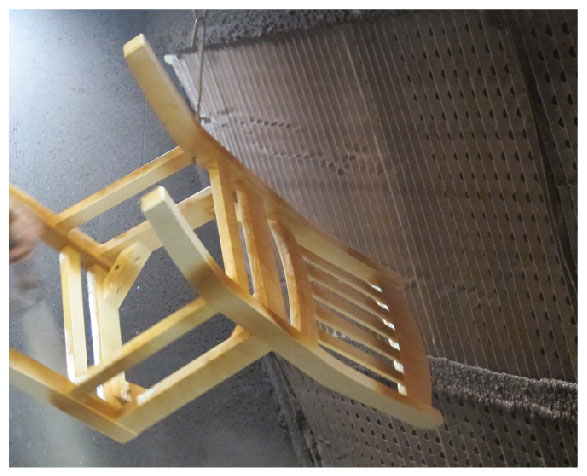
Fase due: Colorazione
La prima mano di vernice viene spruzzata sull'intera cornice.
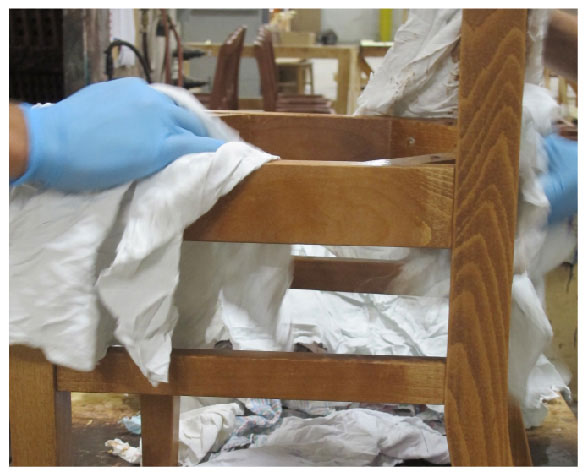
Fase tre: Pulizia delle mani
La tinta viene passata a mano sulla cornice per garantire che il colore sia uniforme in tutto il telaio, comprese le fessure interne, gli angoli e le giunture. La passata a mano assicura anche la massima penetrazione nel legno.
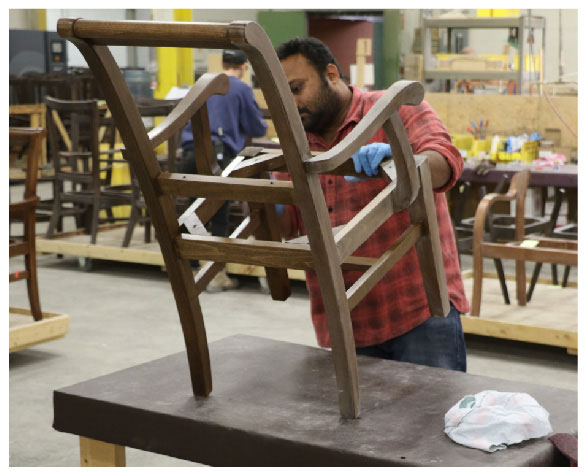
Fase quattro: Ispezione
La cornice viene ispezionata attentamente per vedere se è necessario apportare modifiche alla tinta. In questa fase vengono apportate tutte le modifiche necessarie.
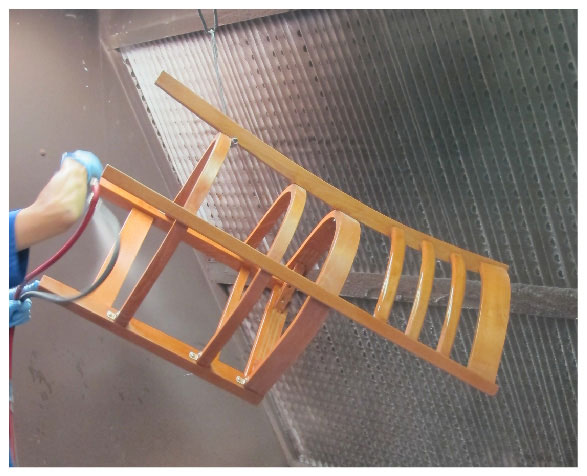
Fase cinque: Sigillante
Uno strato di sigillante catalizzato viene spruzzato sull'intera struttura per sigillare completamente il legno. Ciò include la parte inferiore del sedile.
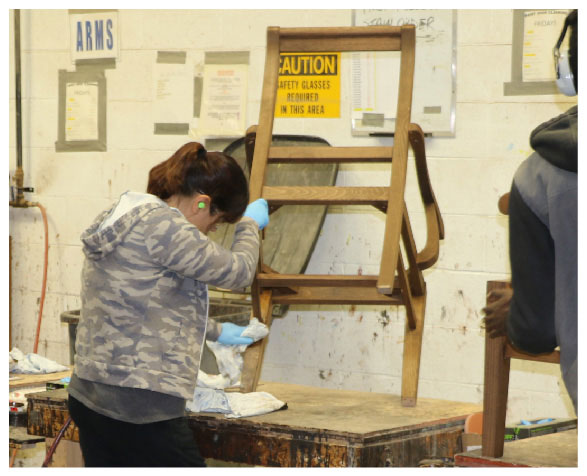
Fase sei: Più levigatura
Una volta che la macchia e il sigillante sono asciutti, il sigillante catalizzato viene carteggiato con carta vetrata a grana 280. La carta con numeri di grana da 180 a 320 è ideale per la abrasione tra le mani di finitura.
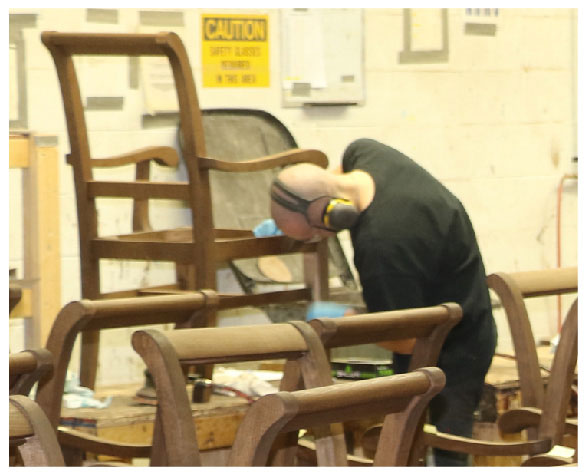
Settimo passo: Carteggiatura finale
La carteggiatura finale viene effettuata utilizzando le spugnette Scotch Brite® per rimuovere eventuali segni di carteggiatura.
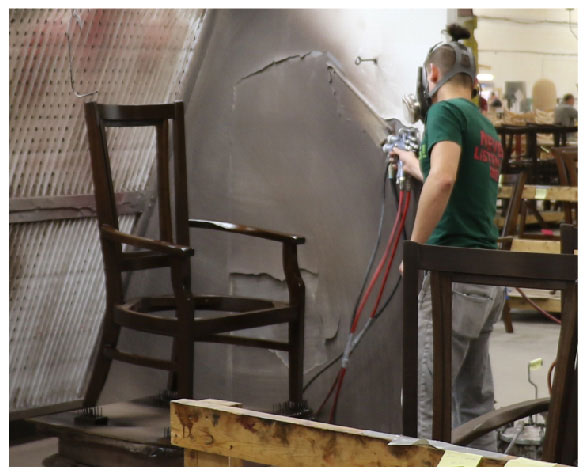
Fase otto: Lacca catalizzata
Uno strato di lacca catalizzata viene spruzzato sulla cornice. Questo tipo di lacca è molto resistente per prevenire lo sbiadimento del colore, le ammaccature, le scheggiature e i graffi. Inoltre, impedirà al legno di assorbire versamenti e germi e di essere influenzato da fattori ambientali come l'umidità.
Inoltre, si tratta di una formula antimicrobica che inibisce la crescita di microrganismi quali batteri, virus, funghi, alghe, muffe e molto altro.
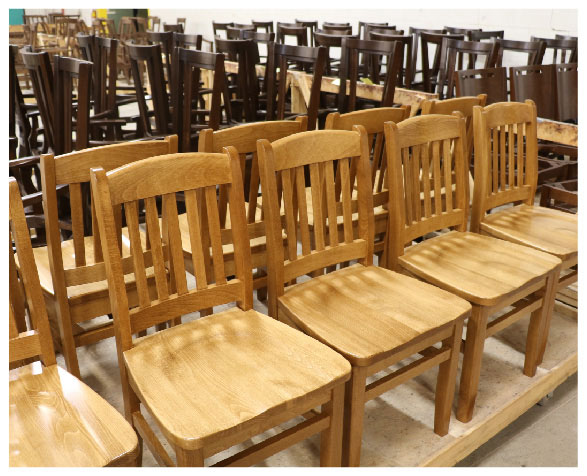
Passo nove: Garanzia di qualità
Prima dell'imballaggio e della spedizione viene eseguito un controllo finale per garantire un elevato livello di qualità.
Vuoi ricevere un preventivo per le sedie in legno Holsag? Contattaci.